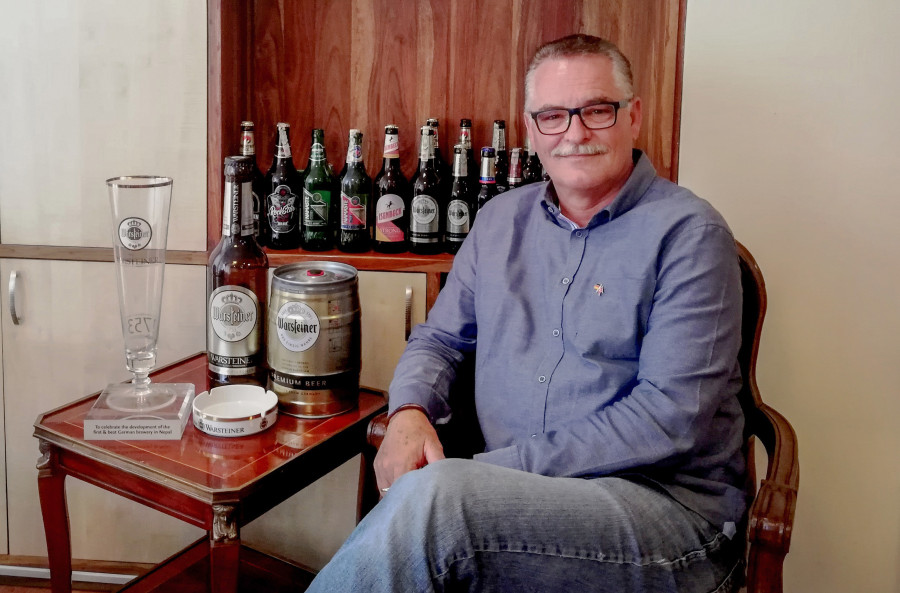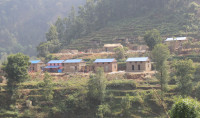Money
‘Nepali market for beers is changing with consumers’ preferences for alternative tastes’
Thomas Nösner on Nepal’s beer scene and its adaptability with the international brands.
Thomas Heaton
German beer brand Warsteiner arrived in Nepal last year with much fanfare, having teamed up with Jawalakhel Groups of Industries. Since then, rumours of the beer failing swirled around Kathmandu, but it’s all part of playing the long game, according to Warsteiner International’s Technical Director Thomas Nösner. Following a recent visit to Raj Brewery, he spoke to the Post’s Thomas Heaton about Nepal’s beer scene, global trends, craft beer and the brand’s future.
What was it like for Warsteiner to enter into a lager dominated market, run by a few breweries who flood the market with their product?
Nepal is dominated by, let’s say, one group. From what I’ve seen, our problem wasn’t in distribution, it was at the point of sale. But, what is happening in this market, which is dominated by one group and one or two types of beer, is it’s already changing. I think this change will rapidly ramp up over the next 12 months.
For comparison, in Germany 20 or 25 years ago, we had 10 stock keeping units (varieties), now we have 250. We extended the units because you cannot exist in a market with one or two different brands.
In Nepal, what I see is competitors are blocking new brands, which is something you can only do for a certain time. Eventually you will fail. When you block the competition, you block the customers. The customers are expecting variety and expect more beers, and this is going on all over the world. No one can avoid the competition.
For instance, until 20 years ago, there was only one beer in Argentina but now, there are a lot of beers. Then there are the craft brewers. Many of my colleagues say craft beer is bad for our business, but it’s not true—they make beer interesting. They give a push to the beer business. I think Nepal is also following the same trend.
What has Warsteiner learned about the Nepali market since entering last year? What is the marketing strategy now?
We want to be premium. People expected us to come in a big rush, but we didn’t. When you come into such a different market, it will take a while and you have to explain what you’re doing. Nevertheless, we are continuously growing—not exceptionally fast—but there will be a point when we will grow faster.
Warsteiner has offered a different product—visually and taste-wise in comparison to the existing lager beers. People who like it, love it, and that was my expectation.
You cannot expect people who have had only one beer for decades to take up new tastes quickly, because they might not be used to it. But over time, there will be a lot of changes and a lot more competition. For pub owners, I would recommend they take up more variety, because if they don’t, they will fail.
Regarding Warsteiner, we wanted to make it into more of an experience. Our glass itself is a champagne glass, and our target was to always be really premium, not only by the label. Our next differentiation is our purity law—there’s no alternative for us.
But entering a new market is always different in terms of infrastructure and habits in markets, especially in a country like Nepal. In Germany we call it liquid bread, we have beer nearly at any time. In Nepal, people mostly prefer drinking on weekends, but that’s changing too.
Warsteiner Group’s ideals include the idea of sustainability, in many forms, but what is it doing on an environmental level?
We cannot do much with the product itself. But Raj Brewery is state of the art and is brand new, and is built with sustainability in mind. We constantly work to improve processes regarding wastewater and energy consumption. There is an above-average wastewater plant from the beginning, which puts clean water back into the river, and the spent grain is going to farmers for livestock. Nothing is really wasted or lost.
Given the large strong beer market in Nepal, and the international offerings Warsteiner has, would the brand look into doing its own strong beer?
Nepal is not a typical lager beer market. We see the consumption running up in Nepal—this means we can bring new ideas in. In the next couple of months, we will launch a strong beer because you cannot ignore that market.
Of course, we will make it a bit different, but not with Warsteiner. Maybe it will be more adapted to the Nepali market. It will be the same procedure, basically, with the purity laws and ingredients. We’ll see how it goes. I think there will be some more surprises in the next couple of months.
Nepal doesn’t have a malt industry, or a culture of following German purity laws. What are the major difficulties in brewing?
Yes, malt is not available in Nepal, it needs to be imported. For malt, we had an agreement with malters and we audit them. Raj Brewery can take advantage of that—they can buy malt at the same place as we do. The hops are flown in as are the yeast, which we’ve selected over decades. The yeast has a big impact on several taste parameters.
In other countries, I know companies are forced to use barley produced in the country, but it’s impossible in Nepal. You can’t do a good malt everywhere, because it depends on the raw materials. It’s pretty hard for the marketing department to explain purity laws to people, and there’s still a way to go to explain it.
Due to all the imports, it’s a bit more expensive, but of course it has to be for the quality. It’s pure malt, pure hops, yeast and water—nothing more—and not blended with rice or sugar to lift alcohol levels.
But we are more than happy with the brewery and the quality of the beer including flavour stability. It has exceeded my expectations.
We’ve got the result of good preparation, because we’ve been involved with Raj Brewery from the start, to influence all the equipment and details so we meet all our technological targets. Usually breweries at the beginning have big problems, but meanwhile here it’s doing very well and the organisation is good.
Read: Big beer companies have a monopoly on the market. Now some beer lovers want to change that.
***
What do you think?
Dear reader, we’d like to hear from you. We regularly publish letters to the editor on contemporary issues or direct responses to something the Post has recently published. Please send your letters to [email protected] with "Letter to the Editor" in the subject line. Please include your name, location, and a contact address so one of our editors can reach out to you.




 14.12°C Kathmandu
14.12°C Kathmandu




.jpg&w=200&height=120)








